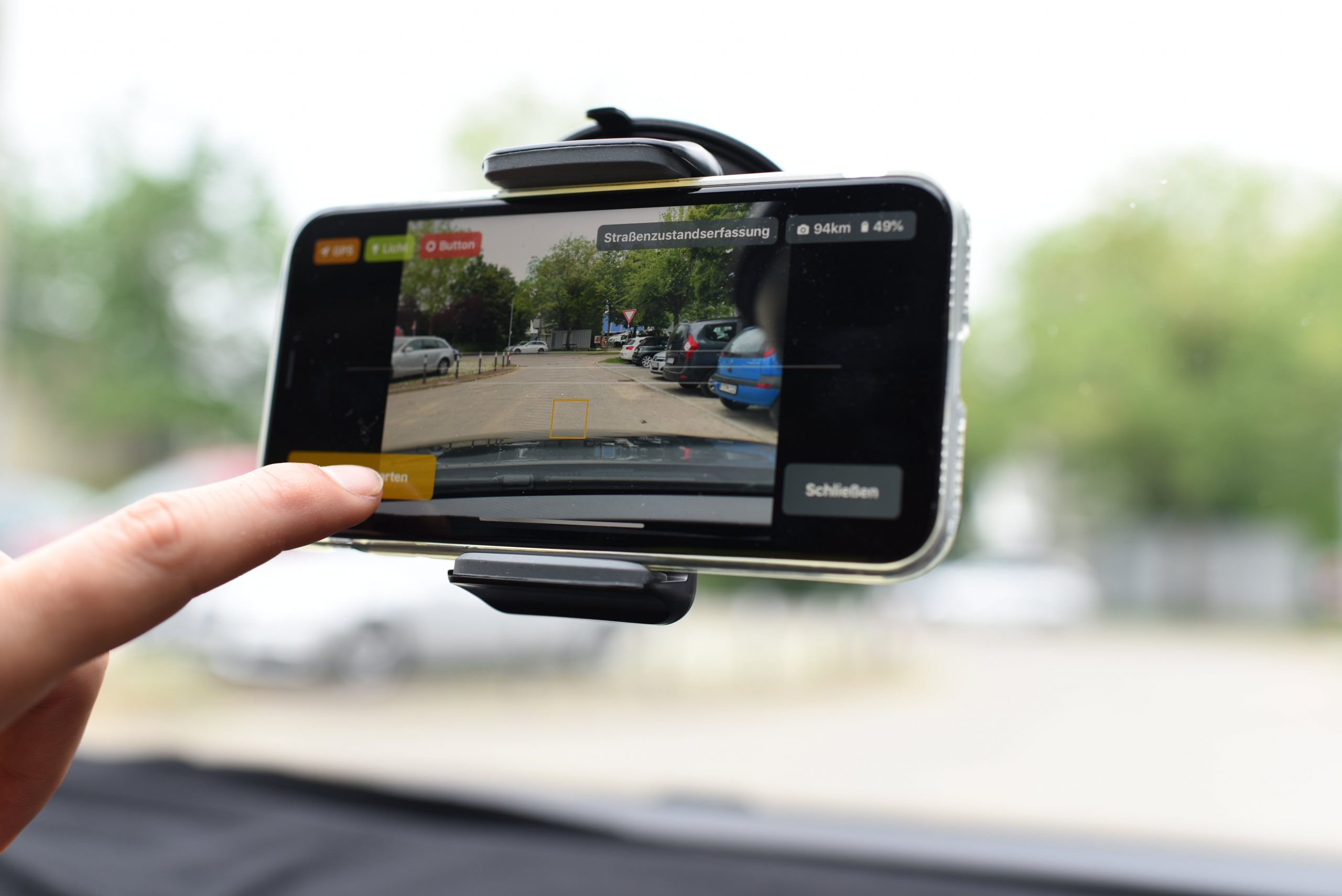
How do self-driving cars handle potholes on the road? As just stay driving ahead or spontaneously around them aren’t an option. You have to take the bull by the horns, that’s what the founders of vialytics were thinking. They designed a system that uses artificial intelligence (AI) to map out road conditions. This is how the road authorities can deal with the problems as quickly as possible. Danilo Jovicic, who founded the start-up together with Achim Hoth and Patrick Glaser, explains how the system works.

How did you come up with the idea of setting up vialytics?
We wanted to do business as an independent company and set up our own start-up. We got to know each other through the Activatr and Pioniergeist start-up programs. It was by coincidence that we then got together in a small group. That’s where the idea of doing something with road management took shape. We came up with a lot of wild ideas for a couple of weeks. We also had a lot of contact with municipalities who told us about problems concerning road management. The overarching issue there was autonomous traffic. We thought carefully about what you need to do in order to be able to drive safely autonomously. That invariably comes down to good roads.
What does your product look like?
Municipalities can continuously monitor their streets with our system. This is done with the help of a modified smartphone mounted on the windscreen of a municipal service vehicle. On a sweeper, for instance. These are at any rate always out and about in the city. The smartphone records the road every 4 meters.
This data is subsequently sent to us. It is then analyzed using an algorithm. Any damage to the road is automatically detected this way. The municipalities get the data back again in the form of a dynamic map. As they are better informed about the condition of the roads, they can react more quickly to any damage. This leads to a more sustainable and efficient way of road management. After all, plenty of municipalities don’t address the maintenance of their streets until it is far too late. Which means that the costs are also much higher. Current systems do not offer a proper solution. Those recordings are actually made with too great a time frame between each other. Nor are they carried out systematically.
Was there a problem you had to resolve first?
It was particularly difficult in the beginning to gain the trust of municipalities. This was mainly due to the fact that municipalities rarely cooperate with start-ups here. We set up 5 pilot projects where our system was tested. Thanks to the positive reactions we received, we have now managed to build up a customer base of 50 municipalities throughout Germany. Currently, we are also in contact with cities in other countries who are interested in our product.
What are you especially proud of?
We are especially proud of our first customers who have dispelled any preconceptions that local councils are a bit stuffy. Some of them were so enthusiastic about our solution that they bought the system before it had even been fully developed. Of course, we are also very proud of our team, which has expanded considerably over the last 6 months. Our employees are busy developing the product on a daily basis.

What does the future of vialytics look like?
Our goal is that of internationalization. We want road authorities all over the world to be able to maintain their road networks in an efficient and sustainable manner. Apart from that, we will continue to work on improving things so that we can keep on responding to the requests of our customers.
What tips do you have for other starters?
Do you have a good idea? Jump into the deep end and dare to make your dreams come true. And for those who have already set up a company: at some stage, take each employee along with you to a client. That’s what you’ll learn the most from.
More articles on start-ups can be found here.

